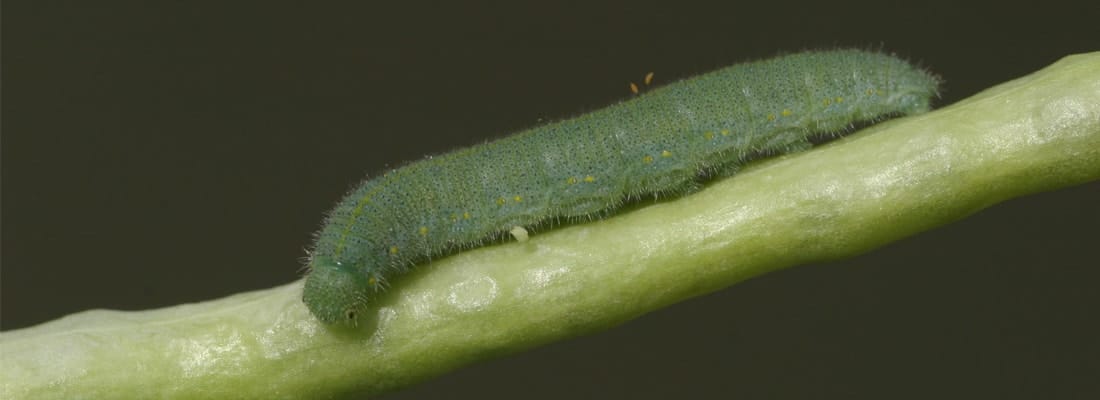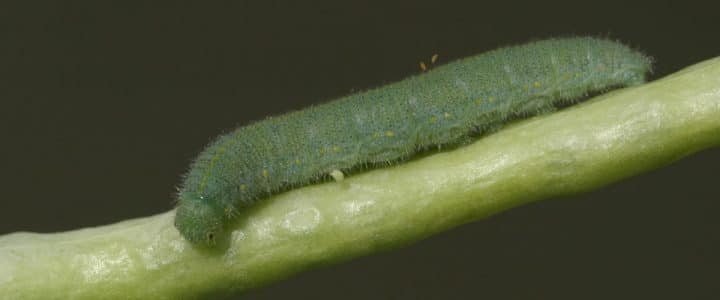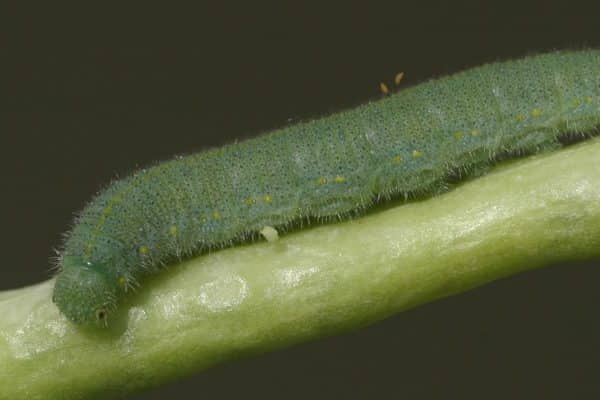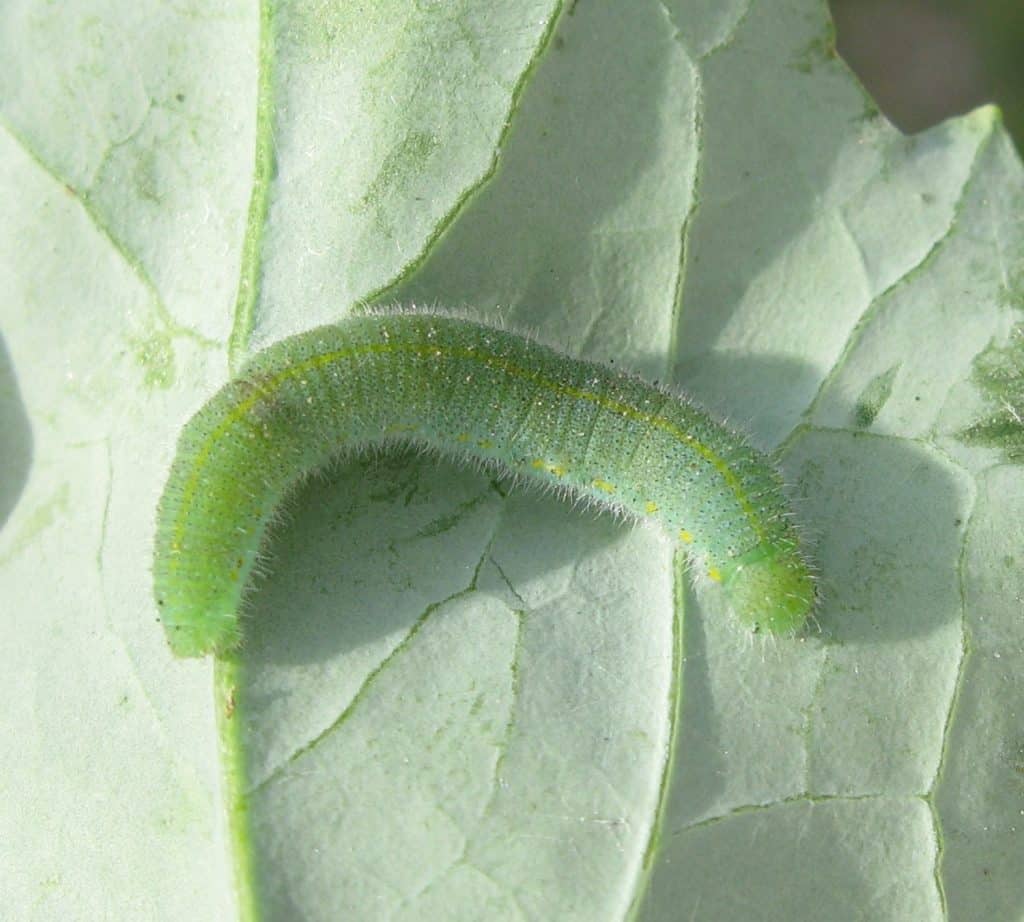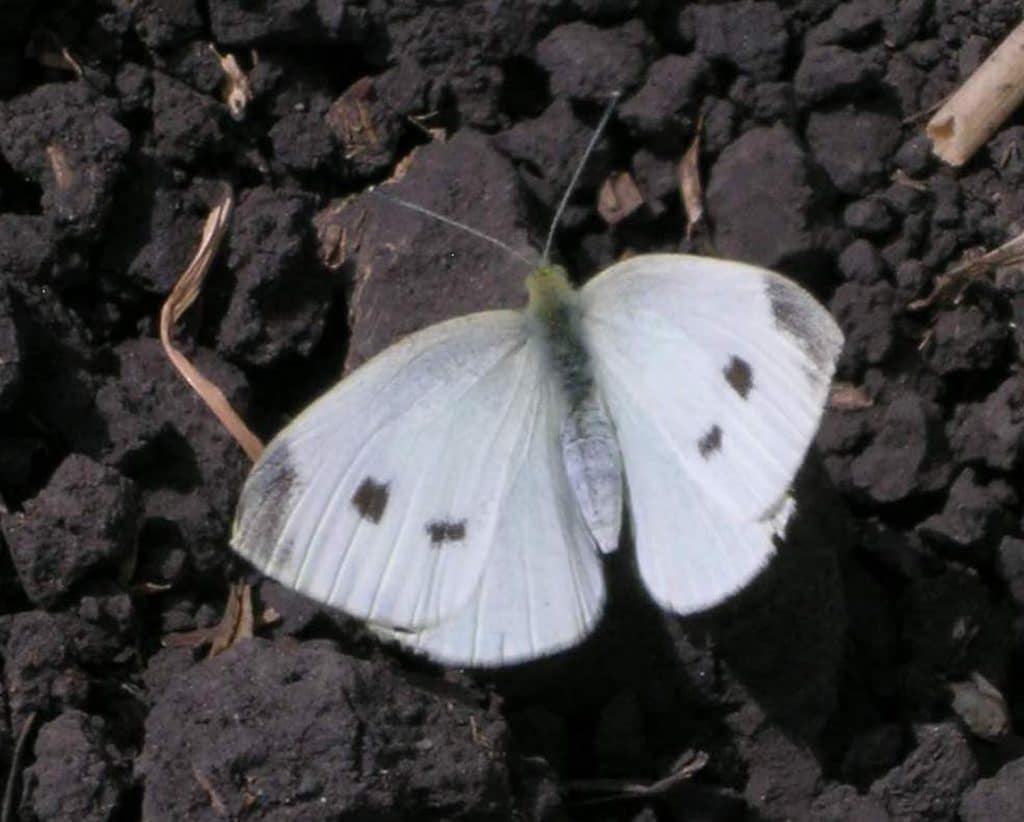These occasional pest insects haven’t been reported to cause economic damage in canola on the Prairies. However, proper identification of the larval stage of the species that share this common name is important to distinguish them from other small green worms that may be found in a field. Since the adult moths only feed on nectar, they don’t cause damage in their final life stage.
Overview
Two cabbageworm species are commonly found in canola fields in the Prairies and both have slightly different names for the adult and immature stage. The adult stages are referred to as the small cabbage white butterfly and the western checkered white butterfly. The larvae of the small cabbage white (butterfly) is known as the imported cabbageworm (Pieris rapae). The larvae of the western checkered white (butterfly) is referred to as the checkered white cabbageworm (Pontia occidentalis). A third checkered white butterfly (Pontia protodice) whose larvae are referred to as the southern cabbageworm may also be observed on the Prairies.
Imported cabbageworms are green with a velvety texture, and have a faint yellow stripe down their backs. The checkered white cabbageworm larvae has brilliant blue and yellow stripes down its back, while the southern cabbageworm pupae are bluish gray with white stripes and small black dots. The adult stages of all three species are white butterflies with black dots or markings that fly around during the day.
There are two or three generations per year.
Life cycle
Under ideal conditions a cabbageworm life cycle could be completed in as little as 30 days, including four to eight days as an egg, 11 to 22 days as a larva, 10 days in pupation and five days as an adult moth 1.
Economic damage
Cabbageworm populations have not been reported in sufficient number to cause economic damage in canola.
Female moths use glucosinolates and related products to assist with recognizing suitable plant hosts, which explains their ability to recognize and severely damage single rows of plants related to canola, such as cabbage. In a field situation, the cabbageworms feed on canola leaves but do not cause economic losses.
Footnotes
- Huang R., Zhou, J., Zhang, S., Zeng, X., Hu, L., & Yao, Y. 2015. Research progress in the biological control of Pieris rapae. Acta Agriculturae Jiangxi, 27, 46-49.[↩]
